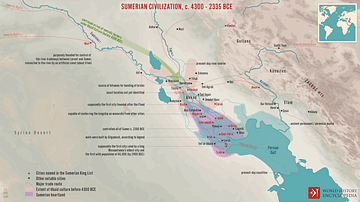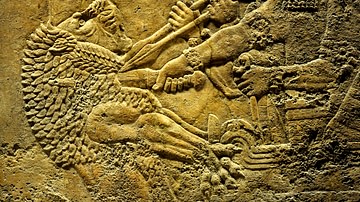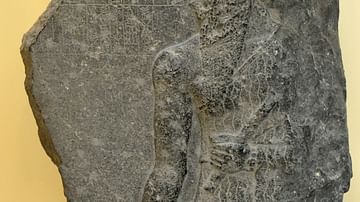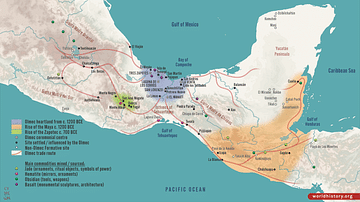Search
Remove Ads
Advertisement
Search Results

Image
Map of the Indus Valley Civilization, c.3300-1300 BCE - Harappa, Mohenjo-Daro, and the Roots of Civilization in the Bronze Age Subcontinent
This map illustrates the extent and key urban centers of the Indus Valley Civilization (circa 3300–1300 BCE), one of the world’s earliest complex societies. Spanning parts of modern-day Pakistan and northwest India, this civilization was...

Definition
Ur-Nammu
Ur-Nammu (r. 2047-2030 BCE) was the founder of the Third Dynasty of Ur in Sumer who initiated the so-called Ur III Period (2047-1750 BCE) also known as the Sumerian Renaissance. He is best known as the king who composed the oldest extant...

Image
Sumerian Civilization, c. 4300 - 2335 BCE
A map illustrating the emergence of the Sumerian civilization around 6000 BCE from a collection of city-states on the floodplains of southern Mesopotamia, along the Tigris and Euphrates Rivers in the area that was to later become the Akkadian...

Definition
Code of Hammurabi
The Code of Hammurabi was a set of 282 laws inscribed in stone by the Babylonian king Hammurabi (r. 1795-1750 BCE) who conquered and then ruled ancient Mesopotamia. Although his law code was not the first, it was the most clearly defined...

Definition
Assyria
Assyria was the region located in the ancient Near East which, under the Neo-Assyrian Empire, reached from Mesopotamia (modern-day Iraq) through Asia Minor (modern Turkey) and down through Egypt. The empire began modestly at the city of Ashur...

Article
The Legend of Cutha
The Legend of Cutha (also known as the Cutha Legend and Kutha Legend) is a fictional work dated to the 2nd millennium BCE belonging to the genre known as Mesopotamian Naru literature. It features the Akkadian king Naram-Sin (r. 2261-2224...

Image
Map of the Olmec Civilization
This map illustrates the rise and extent of the Olmec civilization, which flourished from around 1200 to 400 BCE (the earliest Olmec finds near the San Lorenzo Tenochtitlán sites, date back to c.1600) in the present-day Gulf Coast in the...

Definition
Ancient Persian Government
The government of ancient Persia was based on an efficient bureaucracy which combined the centralization of power with the decentralization of administration. The Achaemenid Empire (c. 550-330 BCE) founded by Cyrus the Great (r. c. 550-530...

Article
Fashion & Dress in Ancient Mesopotamia
Fashion and dress in Mesopotamia – clothing, footwear, and accessories – was not only functional but defined one's social status and developed from a simple loincloth in the Ubaid Period (c. 5000-4100 BCE) to brightly colored robes and dresses...

Video
Cradles of Civilization - Sargon of Akkad
In the fifth part of his lecture, Dr. Neiman explains that as the writing system developed, the Sumerian and Akkadian civilizations start describing their world. The autobiography of the Akkadian King Sargon of Akkad is recounted.